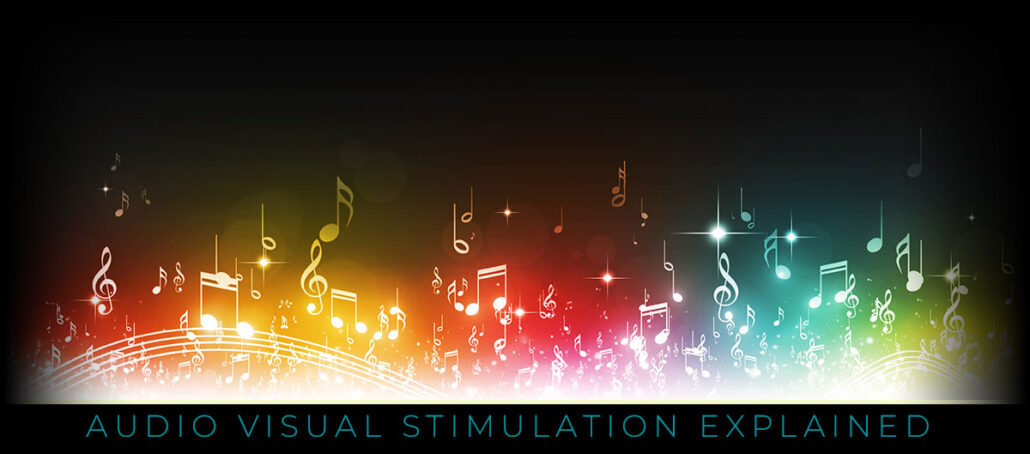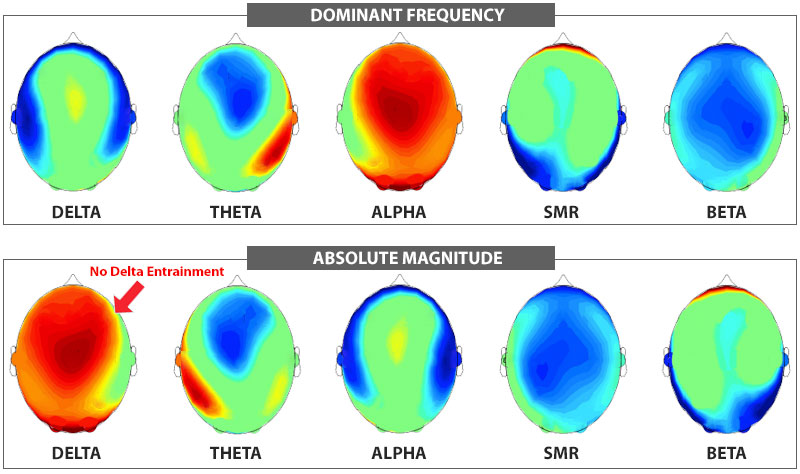
Audio Visual Stimulation (AVS) Technology plays a large role in the recent wave of cognitive therapies that have become more mainstream in the last decade. Although the use of sound and or light for healing and relaxation has been used for centuries, it’s only recently that the scientific community has embraced its potential for improving people’s lives.
AVS Technology is related to EEG Neurofeedback and Biofeedback technology. While EEG Neurofeedback is more of a precise system of brainwave stimulation using electrodes and gel directly on the scalp, AVS provides a more general application of brainwave stimulation.
EEG Neurofeedback is also much more complicated of a system to work with and as a result it requires specialized, extensive training for usage, making it more expensive. However, you can achieve similar results, though more general with an AVS system.
There is a difference between biofeedback and AVS. Biofeedback is used to condition the nervous system, while AVS stimulates specific patterns of activity in the brain. With biofeedback you become aware of processes normally unavailable to conscious inspection. The awareness includes understanding how it feels to increase or decrease the selected process (a state of relaxation or arousal). In the end, both will get you to the same destination but the journey differs. In this module, we will focus on using AVS for brainwave entrainment.
Entrainment simply guides the user into specific normalized brainwave frequencies. By doing this, the brain may stop producing irregular brainwaves that may be causing symptoms. For example, a person with elevated Beta brainwaves may experience muscle tension, stress and other symptoms associated with anxiety. By stimulating other frequencies, the brain may start to produce less beta. As a result, the user may see a reduction in symptoms related to elevated Beta waves.
This is very important, because it can affect the benefits of a session. This is also why a QEEG Brain map can help provide more targeted and successful A.V.E. training. If the Dominant Frequency on a QEEG brain map shows Alpha dominant, then Alpha will be the easiest to entrain.

This is very important and why a QEEG brain map can be very important. If someone has globally high Delta as the result of a concussion or brain injury, entrainment of delta frequencies can exacerbate it and make things worse. Instead, focusing on Theta or Alpha sessions or even ramping sessions can help to suppress the Delta and give the user the most benefit. It is beneficial to check both the magnitude and the dominant frequency when determining what session to use. Slow or normal magnitude frequencies are fine to entrain (Theta, Alpha, SMR or Beta above), but fast magnitude frequencies should be avoided until they normalize.
With neurofeedback, you can put leads on the head and target specific areas of the brain. However, entrainment stimulates the visual and auditory cortex, which sends signals to the entire brain. A such, you should be aware of elevated areas of the brain that may be impacted. As an example, if you see elevated frontal Beta in a QEEG brain map, you may want to minimize or avoid Beta sessions until those Beta waves are normalized. Instead, focus on Alpha or Gamma sessions.
Although results vary with the individual, the results on a whole have been favorable. Some of the benefits of sound and light brain entrainment reported are:
The more control you can acquire over your brain states, the more emotional and mental control you acquire over your life.
Our senses take in information which is processed by our brain, which in turn directs our thoughts and emotions. These states of being are reflected by our brainwaves. When you change your state of mind, you are also changing your brainwaves. Likewise, if you change your brainwaves, your state of mind will also change. It is this latter principle that Brainwave Entrainment is based on. The Thalamus acts as a pacemaker of sorts, giving cues to the cortical neurons to fire in a particular pattern (or frequency). The neurons then synchronize with each other by what is known as the “Frequency Following Response” (FFR). The FFR is likened to a neurological game of follow the leader as the cortical neurons fall into harmony with each other. What is interesting about the FFR is that if an outside rhythm is introduced then the cortical neurons will synchronize themselves to that beat.
Audio Visual Stimulation (also known as Light and Sound Stimulation) is a tool that creates a FFR by exposing the brain to a set of desired frequencies. This is done by means of headphones which deliver the frequencies through sound and specialized light frames which deliver similar frequencies though pulsing lights. These external frequencies act as a neurological pied piper by coaxing the brainwaves to follow them into a desired state.
“The Frequency Following Response that the mind experiences through light and sound stimulation provides a focus for the brain. This focus safely quells any internal dialogue or “brain chatter,” and enables the listener to reach more quickly and effectively the optimum state of mind targeted for the task at hand (i.e. energizing, learning, relaxing, etc.)”1 Studies have shown light to be a more powerful method of delivery than sound, however, some people (especially those who are light sensitive) do respond more favorably to sound entrainment. Sound entrainment is also useful in situations where light entrainment isn’t possible, such as if you want to work at your desk.

